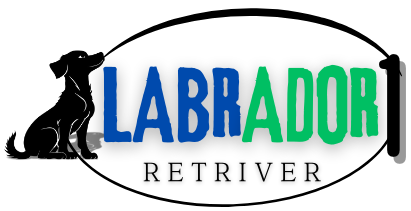How to care for fox red Labrador puppies in their first year
Bringing home a fox red Labrador puppy is one of life’s most heartwarming experiences. Those expressive eyes, that rich rust-colored coat, and the wag of a tail that never seems to stop—it’s enough to melt even the toughest heart. But while the joy is immense, so is the responsibility. Your puppy’s first year is a critical time for physical growth, emotional development, and bonding. What you do during this stage can shape your dog’s health and temperament for life.
If you’re searching for guidance on how to care for your fox red Labrador puppy the right way, you’re in the perfect place. This guide will walk you through everything you need—from nutrition and vet visits to training, grooming, and creating a safe home. Let’s get started on making that first year as rewarding as it can be.
Table of Contents
Understanding Fox Red Labrador Puppies: What Makes Them Special
Fox red Labs are not a separate breed but a rare color variation of the yellow Labrador Retriever. Their deep reddish coat stands out and gives them a unique, unforgettable charm. But beyond looks, their temperament is what truly shines. You’ll find that your pup is affectionate, highly trainable, and full of playful energy.
Key Growth Stages in Year One
To care for your fox red Lab effectively, it helps to understand what milestones lie ahead:
| Age | Development Milestone |
|---|---|
| 0–8 weeks | Nursing, socializing with littermates |
| 8–12 weeks | First vet visits, teething begins |
| 3–6 months | Potty training, basic commands, chewing behavior |
| 6–12 months | Adolescence, increased independence |
Each stage brings new needs. Your job is to guide your puppy gently, with consistency and lots of positive reinforcement.
Feeding Fox Red Labrador Puppies: Nutrition That Nurtures Growth
Proper nutrition is the cornerstone of your puppy’s health. You want to choose food that supports both mental and physical development.
What to Look for in Puppy Food
- High-quality protein (like chicken, salmon, or lamb)
- DHA for brain and vision development
- Calcium and phosphorus for strong bones
- Avoid by-products, artificial preservatives, or added sugars
If you’re unsure, go for a large-breed puppy formula with AAFCO approval.
Feeding Schedule by Age
| Age | Meals/Day | Portion Size |
|---|---|---|
| 8–12 weeks | 4 | ½ to 1 cup per meal |
| 3–6 months | 3 | 1 to 1½ cups per meal |
| 6–12 months | 2 | 1½ to 2 cups per meal |
Vet-Approved Homemade Puppy Recipe
Here’s a basic, nutritious recipe for when you want to switch things up:
| Ingredient | Amount | Why It’s Good |
|---|---|---|
| Boiled chicken breast | 1 cup | Lean protein for muscle development |
| Cooked brown rice | ½ cup | Digestible energy source |
| Mashed carrots | ¼ cup | Rich in fiber and vitamin A |
| Salmon oil | 1 tsp | Promotes healthy coat and brain |
Always consult your vet before introducing homemade meals to ensure your pup gets the right balance of nutrients.
Health Care: Vet Visits, Vaccinations, and Parasite Prevention

Your fox red Labrador’s first year requires regular vet checkups and a well-planned vaccination schedule. This helps build immunity and prevents common canine illnesses.
Vaccination Timeline
- 6–8 weeks: DHPP (distemper, hepatitis, parvovirus, parainfluenza)
- 10–12 weeks: DHPP booster + Bordetella
- 14–16 weeks: Final DHPP booster + Rabies
- 6 months+: Optional vaccines like Lyme and Leptospirosis
Don’t Skip Parasite Control
You’ll also want to stay ahead of:
- Fleas and ticks: Monthly topical or oral medication
- Heartworm: Monthly chewable preventive
- Deworming: At 2, 4, 6, 8, and 12 weeks; then monthly until 6 months
Keep a log of all treatments and vet visits—it’s a helpful tool for monitoring your puppy’s health.
Training Your Fox Red Lab Puppy: The Smart Way to Raise a Well-Behaved Dog
Training should start early. Your fox red Lab is eager to please and extremely intelligent—take advantage of this.
Top 5 Commands to Teach Early
- Sit – the foundation for all obedience
- Stay – builds impulse control
- Come – essential for safety
- Leave it – stops your pup from grabbing harmful items
- Heel – makes walks enjoyable and calm
Use treats, praise, and short, consistent training sessions.
Potty Training Tips
- Take your pup out every 2 hours
- Use the same spot for potty breaks
- Reward immediately after success
- Be patient and never punish accidents
Crate Training Basics
A crate mimics a den and offers security:
- Start with short intervals
- Never use the crate as punishment
- Place it in a quiet area with cozy bedding and a toy
Socialization: Helping Your Pup Build Confidence
Exposing your puppy to different people, sounds, and environments in the first 16 weeks is critical.
Socialization Checklist
- Invite friends over to meet the puppy
- Take car rides to new places
- Introduce to other vaccinated, well-behaved dogs
- Attend a puppy kindergarten class
The goal is to help your fox red Labrador grow into a confident, well-adjusted adult who doesn’t fear the world around them.
Exercise and Play: Burning Energy and Building Bonds
Your fox red Lab is energetic, especially during puppyhood. But because their joints are still developing, exercise should be moderate and age-appropriate.
How Much Exercise Is Enough?
5 minutes of exercise daily
So, at 4 months, you’d aim for 20-minute sessions.
Fun Activities You Can Try
- Fetch in the backyard
- Tug-of-war with soft toys
- Puzzle feeders to stimulate their brain
- Short walks on leash around the block
Avoid long runs or jumps that could strain joints, especially before 12 months.
Grooming That Gorgeous Red Coat
Fox red Labradors shed just like their yellow and chocolate cousins. Regular grooming keeps their coat shiny and reduces shedding around your home.
Weekly Grooming Routine
- Brush once a week with a de-shedding tool
- Bath every 4–6 weeks using a Labrador-safe shampoo
- Wipe ears weekly to prevent wax buildup
- Brush teeth 2–3 times a week or use dental chews
- Trim the nails every 3-4. week, or when you listen to click on the floor
Making grooming part of your routine also strengthens your bond—and your pup will love the attention.
Be Aware of Common Health Issues
While Labs are a generally healthy breed, fox red Labradors—like all large breeds—are prone to specific conditions.
What to Watch Out For
- Hip and elbow dysplasia: Common in large breeds
- Skin allergies: Often triggered by food or environment
- Obesity: Tends to develop without portion control and exercise
Red Flags to See a Vet About
- Limping or stiffness
- Persistent scratching or skin redness
- Sudden loss of appetite
- Lethargy or behavioral changes
Catching problems early can prevent more serious issues down the road.
Setting Up a Puppy-Proofed Home
Before your puppy even arrives, it’s time to make your home safe.
Puppy-Proofing Checklist
- Hide electrical cords and cover outlets
- Move toxic plants out of reach
- Lock away cleaners, meds, and small choking hazards
- Set up a designated potty spot
- Use baby gates to limit access to stairs or certain rooms
Must-Have Supplies
- Crate with a soft bed
- Stainless steel food and water bowls
- Collar with ID tags and microchip
- Leash and harness
- Chew toys and teething aids
- Puppy pads and enzyme cleaner
Conclusion: A Year of Firsts, A Lifetime of Love
Your first year with a fox red Labrador puppy will fly by. From wobbly steps and sleepy snuggles to zoomies and tail wags, it’s a year packed with love, learning, and growth—for both of you. When you provide the right care, structure, and affection, your puppy will repay you with loyalty that lasts a lifetime.
So, take it one day at a time, enjoy the little moments, and know that your efforts today will build the foundation for a happy, healthy, well-behaved dog tomorrow.
FAQs About Fox Red Labrador Puppies

Are fox red Labs different from yellow Labs?
No, they’re genetically the same breed—just a deeper color variation. Their personalities and care needs are identical.
Do fox red Labradors require special grooming?
Not at all. A weekly brushing, ear cleaning, and nail trimming routine will keep them in great shape.
When should I neuter or spay my fox red Lab?
Most vets recommend waiting until 12–18 months to allow full skeletal development, but it’s best to consult your veterinarian.
Are fox red Lab puppies good with kids?
Yes, they’re known for being gentle, playful, and incredibly patient with children when properly trained and socialized.
Ready to Start Your Puppy Journey?
Caring for a fox red Labrador puppy in their first year can be challenging, but it’s also one of the most rewarding experiences you’ll ever have. If you’re ready to embrace the ups and downs, you’ll be rewarded with a loving, loyal best friend.







